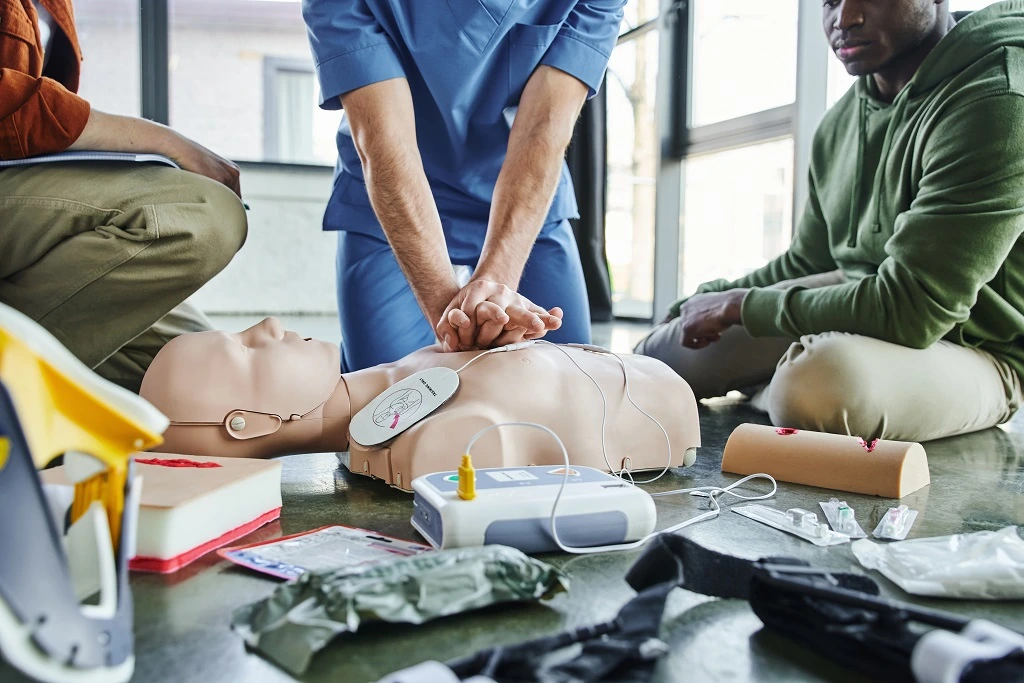Healthcare employers prioritize candidates who can respond effectively in emergency situations. Adding a CPR certification on resume documents is an excellent way to demonstrate that you’re not only qualified but also prepared to handle critical moments with confidence. This certification highlights your commitment to patient safety and your ability to act quickly in life-threatening scenarios.
In this guide, you’ll learn the best ways to showcase your CPR certification, ensuring it’s placed strategically for maximum impact. You’ll also discover common mistakes to avoid and how professional resume assistance can help present your credentials in the best light, giving you a competitive edge in the healthcare job market.
What Can a CPR Certification Do for Your Resume?
Earning a certification like CPR can elevate your candidacy—especially in fields that require health and safety awareness. Whether you’re a nurse, EMT, caregiver, teacher, lifeguard, or trainer, CPR training shows employers that you’re equipped with critical life-saving techniques.
Having CPR skills signals that you can step in during emergencies—something highly valued in roles where public safety or wellness is a priority. It goes beyond the basics, showing that you’re proactive about preparedness and committed to saving lives.
If you’re applying for roles in healthcare, childcare, or even community service, listing a CPR or aid certification demonstrates your alignment with the job requirements. For many of these positions, it’s not just a plus—it’s essential.
By including this certification, you demonstrate that you’re capable of saving lives—a clear sign of professionalism, preparedness, and dedication.

Where to List CPR Certification on Resume
Strategic placement is key to making your CPR certification on resume stand out. Consider listing it in one or more of the following resume sections:
1. Certifications Section
The certifications section is the easiest and most common place to list your CPR certification on resume. Just add it under a heading like “Certifications” and include the full name, who issued it, and when it expires. This helps employers quickly see that your credentials are current and reliable.
Example:
Certifications
• CPR Certified – American Red Cross, Valid Through 2026
• First Aid Certified – American Heart Association
2. Professional Summary
If CPR skills are important for the job you’re applying to, bring them up right at the top in your professional summary. This is a great way to grab attention and show you’re serious about safety and emergency readiness. Adding this right away tells employers you’re prepared and dependable.
Example:
“CPR and First Aid certified caregiver with 5+ years of experience supporting patient safety and wellness in home care settings.”
3. Work Experience Section
Have you used CPR in a real-life job situation? If so, this is your chance to show how your training made a difference. Sharing a quick example or result—like helping in an emergency—shows employers that you don’t just have the certification; you’ve actually used it when it mattered.
Example:
“Provided CPR to stabilize patients during emergencies, contributing to a 100% client safety rating over two years.”
4. Education Section
In some cases, certifications are earned as part of your core academic training—such as during a nursing or midwifery program. When a certification is integrated into your formal education, it’s often more appropriate to list it under the education section of your resume.
Example:
Diploma in Midwifery – XYZ College
Graduated: June 2023
Includes CPR Certification (Issued: March 2023 | Expires: March 2025)
How to List CPR Certification on Resume
How you list your CPR certification on resume can really make a difference in how hiring managers see your skills. When you present it clearly and accurately, it shows you’re prepared to handle emergencies and that you’re up-to-date with essential life-saving skills.
By formatting it properly and including the right details, you make it easy for hiring managers to quickly recognize the value of your certification and its relevance to the job you’re applying for.
Correct Formatting Examples:
- CPR Certified – American Red Cross, Valid Through 2026
- Basic Life Support (BLS) Certification – American Heart Association, Expires 2025
- CPR and First Aid Certified – Red Cross, Issued 2023
Always include the issuing organization, such as “American Red Cross CPR certification,” to ensure the credibility of your certification. This not only helps confirm that your training comes from a reputable source but also makes it easier for hiring managers to verify your credentials.

Common Mistakes to Avoid When Listing CPR Certification
Adding CPR certification on resume can boost your chances, but only if it’s listed the right way. This section helps you understand how to present it clearly and professionally without hurting your credibility.
- Listing expired certifications without current renewal – If your CPR certification has already expired, it’s better to leave it off your resume. Listing outdated credentials can make employers wonder if you’re still trained to handle emergencies. Before you add it, check that it’s still valid—or plan to renew it soon.
- Omitting the issuing body – You should always include who gave you the certification. Saying “CPR Certified” alone isn’t enough—employers want to know it came from a trusted source like the American Red Cross. It builds trust and makes it easy for them to confirm your skills.
- Placing it in unrelated sections – Try not to tuck your CPR certification into random parts of your resume, like under education (unless you earned it during school). Putting it in the wrong place can confuse hiring managers. Stick with clear sections like “Certifications” so it’s easy to spot.
- Using vague or incorrect terminology – Be clear about what you’re certified in. Writing just “First Aid” when you’re actually CPR certified can sell your skills short. Use the right words so employers know exactly what training you’ve had—and how you’re ready to help when it counts.
Turn Your Certification into a Career Advantage
Including your CPR certification on your resume is more than just a formality—it’s a strategic move that sets you apart in health and safety roles. Whether you’re applying for a medical assistant position or a lifeguard job, this certification could be the factor that tips the scales in your favor. It shows employers that you are not only qualified but also ready to handle emergencies with confidence.
By showcasing your ability to respond in critical situations, you demonstrate a proactive, safety-first mindset that is highly valued in healthcare and safety-related fields. This mindset can help you stand out to hiring managers and improve your chances of securing more job interviews. Your CPR certification signals reliability, readiness, and professionalism.
Don’t let your accomplishments go unnoticed. Our team of healthcare resume writers can ensure your certifications are presented with clarity and impact—tailored to the job you’re applying for. Let us help you boost your resume and open doors to your next opportunity.







